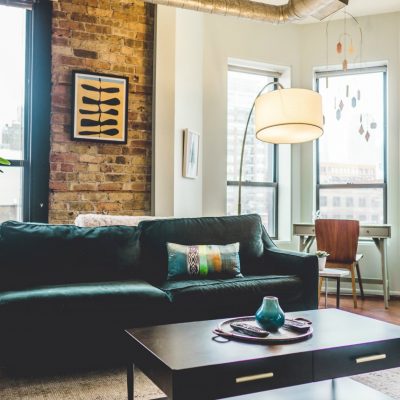Successful Layouts for Every Room

Decorating your home is a very personal thing. The choices of furniture, design style, colour scheme and artwork all combine to create a space that reflects your personality.
Many people start with a specific vision in mind when they set out on a quest to make their home their own. They walk through home furnishing stores, pour over paint chips, and scour galleries for the perfect artwork.
But what happens if once the rooms are complete, something doesn’t feel or look right? What if after you painstakingly choose every detail, somehow the room doesn’t work?
Before you start agonizing over every feature, there might be a specific design element that is wreaking havoc with your room. What single factor can have such an impact? A room’s layout for example, can have a large bearing on how a space looks and feels.
In fact, each room has its own ideal configuration that can affect both its functionality and appearance. Could this be the problem? How do you know what the successful layout is for every room?
Successful layouts for living rooms:
Compared to other spaces within a home, living rooms provide more of an opportunity to be creative. Unlike bedrooms and bathrooms, living rooms often serve multiple purposes and can be void of walls in a open concept home.
An optimal configuration therefore, is determined by the size, function and style of the room. So keeping all of these considerations in mind, what are the hallmarks of a successful layout?
- Perhaps the largest gaffe that a home decorator can commit is to create “wallflower furniture”. This is what happens when you push your couch and loveseat up against the walls. Rather than visually enlarging a room, the results are more often awkward conversations and wasted space.
- As an alternative, float your furniture in the middle of the room facing one another, so as to create cozy conversation areas. Instead of starting from the edges, “you can create a very cozy space by building it out from the centre of the room”.
- An open concept space poses the problem of creating rooms without any walls. A successful layout in this situation is one in which your furniture is used to create zones. If the great room is to be used for eating, reading and watching tv, delineate these sections by activities.
- Create a dining area with a table and chairs, and place your living room furniture in a separate zone. “A sofa facing away from the dining room defines the conversation area from the rest of this open layout”.
- It is a great idea to anchor these separate spaces with area rugs. To create a reading nook, tuck a comfortable chair and floor lamp in a corner. This is also a great way to utilize wasted space in a large room.
- A layout will feel awkward if traffic flow is a problem. If your living room furniture configuration feels more like a maze than a comfortable seating area, then changes need to be made.
- Having to shimmy around an end table or a chair is a sign of a poorly planned arrangement. If the issue is lack of space or the size of the room, consider either removing specific pieces or purchase smaller chairs, loveseats and sofas.
- Finding or creating a focal point is a great beginning to a successful layout. For instance, if the focal point is a fireplace, build your seating area around this feature so that everyone can enjoy it.
Symmetry is imperative in an ideal configuration. A large piece of furniture on one side of a room needs to be visually weighted on the other. For instance, a sofa can be situated across from two chairs or a loveseat and chair. Not only is this visually appealing, but the symmetry will create a sense of order in the space.
If you place something tall on one side, it needs to be mirrored on the other. “Rooms need big things and little things, tall things and short things”. It adds interest as well as symmetry.
Successful layout for dining rooms:
Although dining rooms may not be used frequently, a successful layout will still require consideration.
- The main culprit of ill-conceived layouts in a dining room is a table that is too large for the space. This can often create a traffic-flow issue, especially once chairs are placed around it.
- If a smaller table is not an option, consider backless seating instead. Benches and stools are great options as they can be pushed underneath the table when it is not in use.
Successful layouts for bedrooms:
Bedrooms provide the unique issue of finding the ideal placement of a large piece of furniture. Depending on the size of the room and configuration of windows and doorways, it can be difficult to create a successful layout.
- Avoid placing the bed in front of a window. This can block natural light, make your room feel stuffy, and can detract from your home’s curb appeal. If there is no other space for the bed, choosing a headboard that is lower than the window can alleviate this issue.
- If the bed is too large for the room it can create traffic flow issues. To avoid feeling cramped, ensure that the bed is not placed too close to the bedroom door.
- Also, try removing extraneous furniture to create more space around the bed. Floating shelves and wall-mounted lighting can provide alternatives to bedside tables.
Creating a home that reflects your personality is a worthwhile endeavour. Including carefully thought-out features, helps to create a home that is warm and welcoming at the end of a day. However, ill-conceived furniture configurations can make your home feel and look awkward.
While it is true that successful layouts require consideration, don’t be overwhelmed; a Certified Ultimate Decorator & ReDesigner™ can easily assist you in planning out your rooms, helping you to create the home of your dreams.






